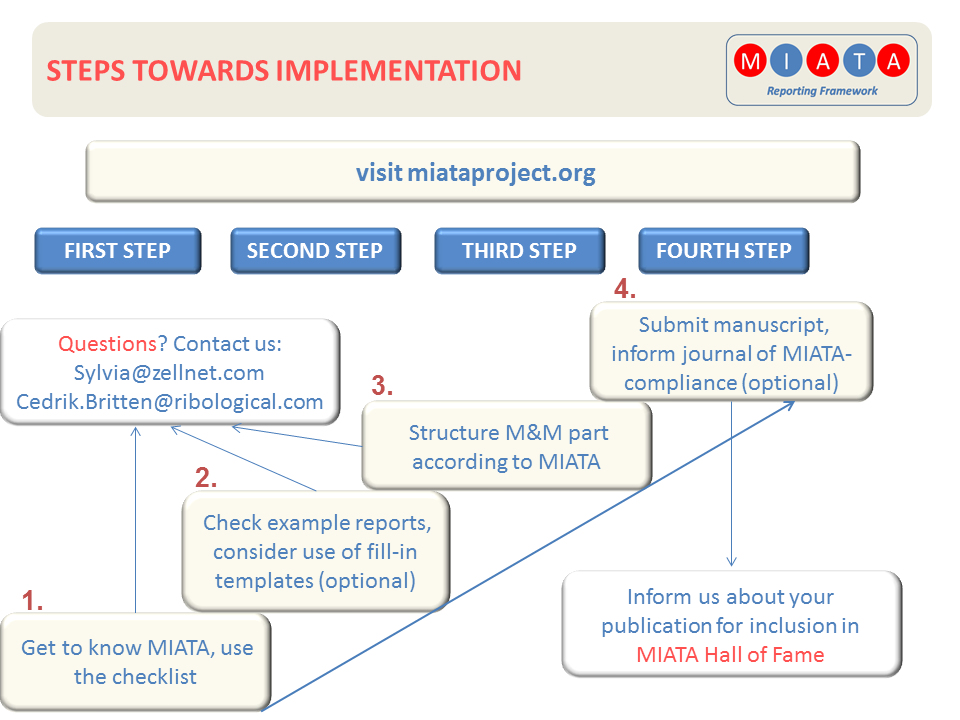Everybody can implement structured reporting of T-cell experiments and may consider providing sufficiently detailed information on those parts of the experimental conduct that are known to impact on the quality of the results to interested readers and referees. Reporting according to MIATA is an optional choice. Implementation of MIATA is made easy by a checklist that guides you through the five modules. Researchers who consider implementing MIATA for the first time may also want to have a look at one of our example reports that are available for ELISPOT, HLA-peptide Multimer staining and cytokine flow cytometry. Be prepared that first time users of MIATA may need to spend a bit more time on composing the Materials & Methods section. For help and time saving, we also provide Materials and Methods sections that can easily be filled in with your protocol-specific details and edited to your liking (“Easy Reporting“). Second time users will be fast and may simply re-use whole modules or parts of it. The efforts in providing more detailed information on critical aspects of experimental conduct will in any case be worthwhile as this will help peers to better understand the experiments and conclusions derived.
Implementation of MIATA will indicate to readers that you are (i) aware of critical assay components, (ii) willing to transparently share minimal information required for improved full understanding of the assays performed and (iii) aiming to control variables impacting on quality. All manuscripts that adhere to the MIATA guidelines will thus be listed in the MIATA website’s HALL OF FAME with direct links to the article. This is likely to lead to increased attention which may lead to more citations of your work being a benefit for both you as authors and the publishers of your manuscripts.
You can structure the Materials & Methods part of your manuscripts according to MIATA and submit your publication to any peer-reviewed journal. Once you let us know (contact@miataproject.org) about the acceptance of your publication, we will add your paper to the Hall of Fame section. There are journals that officially endorse MIATA and have added the recommendation to their instructions for authors. Some journals will allow you to put the MIATA label to the front page of your manuscript making it visible to all readers. This label should be seen as a LABEL OF HONOR by peers and referees that should appreciate that you report on the critical pieces of information of the assay conduct.
